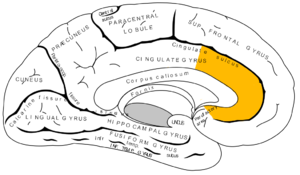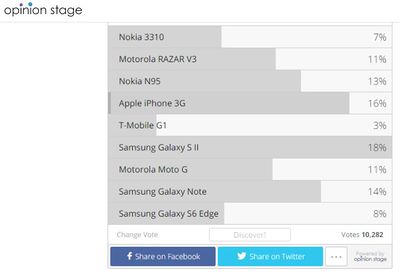Difference between revisions of "Options"
From Deliberative Democracy Institiute Wiki
(→Brain Mechanisms) |
(→Options in CMC) |
||
| Line 13: | Line 13: | ||
==Options in CMC== | ==Options in CMC== | ||
| − | For every [[ | + | For every [[Mechanistic Model for Decision Making|question]] there are may be many [[options]] to reach a solution. In [[CMC]] several methods were developed to represent options in a clear way: |
| − | In the developer communities stack overflow is a well familiar method to represent options. In [http://delib.org delib.org delib.org] mvp1 there is another way. Both ways are adjusted to infinite options. In deliberation | + | In the developer communities stack overflow is a well familiar method to represent options. In [http://delib.org delib.org delib.org] mvp1 there is another way. Both ways are adjusted to infinite options. In deliberation infinite options are crucial for maintaining the ability of every member to represents his [[MON]]. |
[[File:Options-infinte-cmc.jpg|400px|center]] | [[File:Options-infinte-cmc.jpg|400px|center]] | ||
| − | Most of the people know about one or two or even several options. Voting yes/no is reorientation of one option, which the public can accept or reject. Voting between two or more options is a way to select between small set of options (which are preselected). | + | Most of the people know about one or two or even several options. Voting yes/no is a reorientation of one option, which the public can accept or reject. Voting between two or more options is a way to select between a small set of options (which are preselected). |
[[File:Options-limited-opnionstage.jpg|400px|center]] | [[File:Options-limited-opnionstage.jpg|400px|center]] | ||
Latest revision as of 10:55, 2 January 2018
Options are different pathways to reach a solution based on a SON or a MON.
Brain Mechanisms
Here et al. (2009)[1] found that there is correlation between self-control and activity in the dlPFC and vmPFC. As you practice on self control, there is more blood flow in the dlPFC. It seams that "evidence between the options will be stored in the dlPFC and when a trashold is passed in the vmPFC, the decision will be made.
It may be that people with more self-control, can withhold verdict until enough evidence are presented.
The ACC is thought to be part of the conflict detection system between two deductions.ACC sulcus may be required for learning of action values[2]. Similar regions in ACC have also been shown to encode decision uncertainty[3]
In decision making it is thought to detect conflicts between two deductions[4][5][6] and evaluating the rewards of actions[7]. On the integration of these finding please read this article.D1 (dopamine 1) receptor blockade in ACC reduces preference for expending effort for rats[8].
Options in CMC
For every question there are may be many options to reach a solution. In CMC several methods were developed to represent options in a clear way:
In the developer communities stack overflow is a well familiar method to represent options. In delib.org delib.org mvp1 there is another way. Both ways are adjusted to infinite options. In deliberation infinite options are crucial for maintaining the ability of every member to represents his MON.
Most of the people know about one or two or even several options. Voting yes/no is a reorientation of one option, which the public can accept or reject. Voting between two or more options is a way to select between a small set of options (which are preselected).
Distrebuted Evaluation of options
A distributed evaluation of options can be achieved by the OptPSR algorithm described by Caragiannis et al.[9]
References
- ↑ Self-control in decision-making involves modulation of the vmPFC valuation system. Todd A Hare, Colin F Camerer, Antonio Rangel(2009) Science 324 (5927) p. 646-8
- ↑ Kennerley SW, Walton ME, Behrens TEJ, Buckley MJ, Rushworth MFS. Optimal decision-making and the anterior cingulate cortex. Nature Neuroscience. 2006;9: 940– 947.
- ↑ Behrens TE, Woolrich MW, Walton ME, Rushworth MF. Learning the value of information in an uncertain world. Nature Neuroscience. 2007;10: 1214–1221.
- ↑ Botvinick, M., Nystrom, L. E., Fissell, K., Carter, C. S., & Cohen, J. D. (1999). Conflict monitoring versus selection-for-action in anterior cingulate cortex. Nature, 402(6758), 179–181.
- ↑ Neurocognitive correlates of liberalism and conservatism, 2007, Amodio et al. Nature neuroscience (Summery in Hebrew)
- ↑ Jin Fan, Patrick R. Hof, Kevin G. Guise, John A. Fossella and Michael I. Posner, The Functional Integration of the Anterior Cingulate Cortex during Conflict Processing, Cerebral Cortex, Volume 18 Issue 4, p. 796-805.
- ↑ Kennerley et al., Optimal decision making and the anterior cingulate cortex, Nature Neuroscience 9, 940 - 947 (2006)
- ↑ Schweimer J, Hauber W. Dopamine D1 receptors in the anterior cingulate cortex regulate effort-based decision-making. Learning & Memory. 2006;13: 777–782
- ↑ Caragiannis, Ioannis, et al. "Optimizing Positional Scoring Rules for Rank Aggregation." AAAI. 2017. (thanks to Nimrod Talmon for the refernce)


